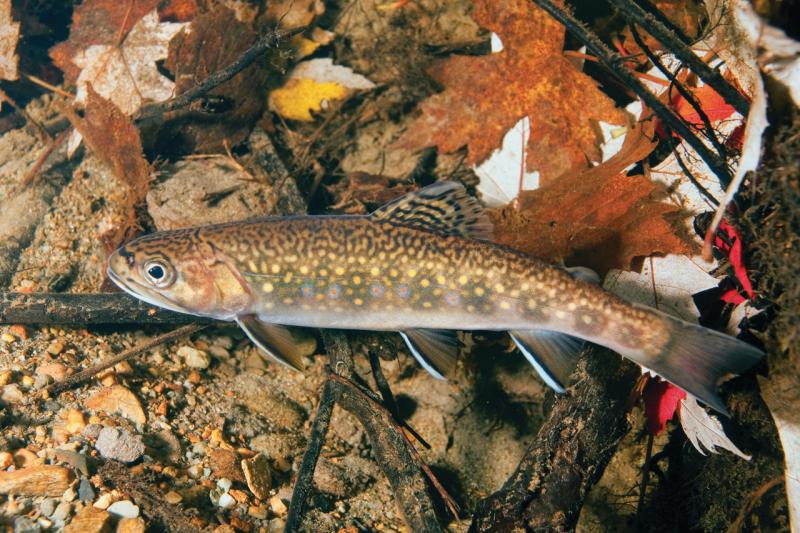On October 30, 2020 the National Fish Habitat Partnership (NFHP) was recognized by Congress with the signing of America’s Conservation Enhancement Act. The new law expands NFHP Board membership, authorizes funding to partner organizations, adds Congressional reporting requirements, and more.
The National Fish Habitat Partnership is a science-based, state-led initiative to protect, restore, and enhance aquatic ecosystems across the United States. It leverages the resources and expertise of federal, state, and tribal governments, and non-governmental and research organizations to achieve on-the-ground results for fish and aquatic habitats. This unique national partnership consists of a network of 20 state-led Fish Habitat Partnerships (FHPs). Each FHP focuses on improving fish habitat and aquatic communities at regional and local levels. Collectively, they have completed more than 1,000 projects in 50 states.
NOAA Fisheries and the National Fish Habitat Partnership
NOAA Fisheries has been a committed partner of NFHP since its inception in 2006. Through our participation, we conduct and fund projects that support our mission to achieve healthy coastal and estuarine ecosystems, productive and sustainable fisheries, conservation of protected resources, and resilient coastal communities.
“NOAA Fisheries is excited for the National Fish Habitat Partnership to be recognized by Congress,” said Samuel Rauch, Deputy Assistant Administrator for Regulatory Programs, NOAA Fisheries. “We look forward to continuing to protect, enhance, and restore important fish habitats across the coastal United States in support of sustainable fisheries and communities as a proud NFHP partner.”
In addition to serving as a member of the NFHP Board, NOAA Fisheries provides scientific and technical assistance and supports research and restoration efforts. We also provide in-kind support via Board staff and various committees in many of the 10 coastal FHPs.
Congressional Recognition of the National Fish Habitat Partnership
Under the new law, the following changes will occur to the structure, funding, and operations of NFHP.
- Membership of the NFHP Board will expand from 20 to 26 members. New interest groups to be represented include: national private landowners, agricultural production, local government involved in fish habitat restoration, corporate industries, and the private sector.
- Funding of $7.2 million annually (fiscal years 2021-2025) is authorized for NFHP for conservation projects. The five participating federal organizations are authorized to receive up to $400,000 annually to provide technical and scientific assistance to NFHP. The organizations include NOAA, the Environmental Protection Agency, U.S. Fish and Wildlife Service, U.S. Geological Survey, and the U.S. Forest Service.
- The NFHP Board will report annually to Congress on any proposed FHP designations or modifications to existing FHPs. The Board will also report to Congress every five years. It will provide the number of stream miles maintained or improved by FHPs, a description of the public access to fish habitats established or improved, a description of improved opportunities for public recreational fishing achieved, and an assessment of the status of fish habitat conservation projects.
- Within one year of enactment and every five years thereafter, the federal agencies represented on the Board will develop an interagency operational plan. The plan will describe the functional, scientific, and operational needs of NFHP to implement the bill, as well as the interagency agreements to support those needs.
In addition to those changes, the Act reauthorizes the North American Wetlands Conservation Act and the Chesapeake Bay Program.
Collaborating with Fish Habitat Partnerships from Coast to Coast
NOAA routinely funds and participates in a variety of coastal FHP projects. In 2020, we funded four projects that will enhance recreational fisheries engagement and restore habitat in Alaska, Washington, California, and Virginia. In 2019, we funded three habitat restoration projects in North Carolina, South Carolina, and Alaska. All these projects are making progress in benefiting coastal habitats, communities, and economies. Below we highlight two NOAA-funded NFHP projects on the East and West coasts.
On the East Coast, we funded an oyster restoration and monitoring project in the Southeast Aquatic Resources Partnership. This project engages the recreational angler community to restore oyster reefs. Oyster shells are collected from local restaurants and used to construct oyster reefs, which provide habitat for recreationally important species like red drum and blue crab. The project is being implemented with the help of the South Carolina Department of Natural Resources and anglers from the Coastal Conservation Association.
On the West Coast, we funded and provided technical support to the Mid Klamath Tributary Mouth Fish Passage Project as part of the California Fish Passage Forum. This project opened 4.5 miles of habitat by modifying barriers to fish passage. Juvenile and adult coho salmon, steelhead trout, and Chinook salmon can now migrate to the cold, clean waters of the Klamath, Salmon, and Scott Rivers. This project directly supports the recovery of protected species under the Endangered Species Act by restoring access to critical habitats.




